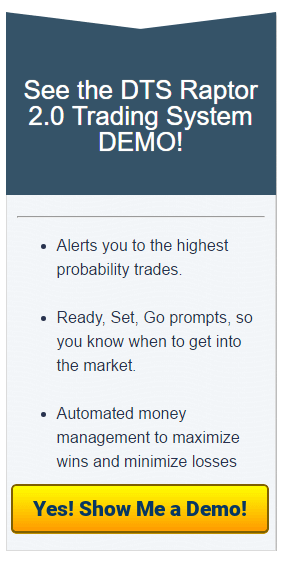Day Trading Tips and Tricks
Pyramid Trading – Using Multiple Orders to Your Advantage
So there you are – you’ve done your homework – and taken the trade. You found an excellent spot for entry, all signals were go, and you entered the market. Within a few minutes of getting in the market though, you find yourself in drawdown. You have a ten tick stop, and before you know it, you are half-way there. You think – “Well, if I thought my initial entry was a good price to get in, I should really love where the market is now and take another order. That will make it so much easier to get to profit once the market moves in my favor, IN FACT, I won’t even have to get to my original entry before I hit break even.”
Yes, the old pyramid trading philosophy. Although this works most of the time when you are trading based on fundamentals over the longer-term, it can be a seriously risky maneuver when trading based on technicals in the short-term.
The Dark Side of Pyramid Trading
When I started trading futures, I had the unfortunate experience of having outstanding results right at the beginning. Why was this unfortunate? Aren’t gains well? In fact, I tripled my account in under two weeks of trading. What this experience set me up for was false confidence in my abilities that I did not posses, and the willingness to take risks based on that assumption.
So there I was with my first live account tripled in two weeks, and I was ready to make more. I found myself in a losing position on the emini, and I decided to add another position since it was apparently at a better price than my initial entry. Not using any stops, I started pyramid trading and kept adding positions as my orders kept losing assuming that the instrument would have to turn around. I watched my open, floating drawdown quickly increase as the instrument continued to move against me. It never turned around!
Finally, after a gut-wrenching 6 hours of watching my account dive deeper into the red (floating profit), my broker closed my losing trades before the account was fully “blown-out.” Yup, I vaporized 80% of the account in one day of reckless trading. That was almost the end of my trading experience, and it took me three months before the word “trading” didn’t come with bitterness and anger in my heart. It took A LOT of learning and experience with different strategies and systems to figure out precisely the depth of my lousy pyramid trading on that fateful day so early in my trading career.

Pyramid Trading the Right Way
One of the things I learned from that experience was although the pyramid trading principle works pretty well in investing, you need to think opposite when it comes to successful day trading. What I am driving at here is rather than adding more positions to losing trades, you should be adding more positions to winning ones!
There are two primary factors at work here:
1. The Trend is Your Friend
Oh yes, this old adage strikes again, and I’m not just talking about the “bigger picture” trend. The fact is that usually when you get your first entry right, and go into profit, you actually tend to do better than when the order goes against you. Much of the time, when you get the direction of movement right, it will continue for some time before making a reversal. Rather than fighting the direction of the market in the near or mid-term, you are going with the flow of the market.
2. Risk, Risk, Risk
The MOST important factor for pyramid trading is how much total exposure to risk your account will take assuming the worst-case scenario. By adding a new order when you are already in profit, you have the option to move your original stop to b/e or better, therefore eliminating your original risk and potentially only risking your newest order or even less than that in the case of a chain of orders of more than two. On the other hand, when you add a new order to one that’s already losing, you are simply adding more risk without eliminating any. Sure, if price turns around it is easier to reach overall b/e than if you hadn’t taken the second or third, etc… order, BUT if price doesn’t turn around you get hit for full risk on every single order. That can equal a big total loss.
Pyramid Trading Scenarios
Let’s look at a quick pyramid trading example to illustrate my point. Let’s assume trader #1 adds one order each 20 tick move against their original position while Trader #2 adds one order for every 20 ticks in FAVOR of their original position. Both traders are using a 50 tick stop for each order and a 50 tick take profit. Each order will risk 2% of the account. Max of three orders.
Trader 1:
- Worst Case Scenario: Trade goes against the position, 2nd trade is taken, then trade continues towards stop loss, so the 3rd position is taken. Our total risk is 2% X 3 positions for a total of a 6% loss.
- Best Case Scenario: Trades go against the trader, but just enough to get three positions into the market and then the market goes into taking full profit for each of the three orders. Total risk is 6%, but the gain is 6%.
- Alternate Scenario: Trade just goes into profit without drawdown. 2% risked for a gain of 2%.
Trader 2:
- Worst Case Scenario: Trade goes against initial order all the way to stop. 2% risked, 2% Lost.
- Best Case Scenario: Trade goes in favor of order, second trade is taken, and the first stop is moved to b/e, and then trade continues in support to 3rd order which now places first stop at second order b/e. Total risk=0% Total gain=6%. Keep in mind, that the worst possible risk at any time during this process is 2%, but never more because new orders are opened, old orders are adjusted.
- Alternate Scenario: Trade just goes into profit, all the way to the third order, and then reverses and stops everything out. Total Risk=2%, Total Loss = little more than 1% (1st order is +20 stop at third order opening, 2nd is break even stop, and 3rd has the risk of full stop loss)
So in the case of the two traders, you can see that with market conditions being relatively the same, the first trader has a max risk of 6% and a minimum risk of 2% EVERY TIME. Trader 2, on the other hand, has a max risk of 2% and a minimum risk of 0%. That right there should be enough.
Now let’s go with a more extreme example of pyramid trading and imagine a 30 tick move for both traders with no limits on how many orders they can open.
You can see Trader 1 is ALWAYS adding more risk by adding new orders while Trader 2 is ALWAYS reducing risk by adding new orders. Trader 1 is fighting against the general movement of the market while Trader 2 is always going with the flow of the market. And think about this, by the time Trader 2 is on their 4th order, they are guaranteed some win, while Trader 1 is risking 8% of their account and has ways to go before overall break even.
No matter what, Trader 2 never risks more than 2% in ANY market conditions, while Trader 1 has risk only limited by the number of the order they are willing to place. Of course, whipsaw markets can affect the outcome of either trader, but the risk is guaranteed never to be more than 2% for Trader 2 and Trader 1 better hope for ideal conditions. Ask yourself this “Would you rather only ever be on the hook for 2% to gain potentially much more, or would you rather risk a fluctuating percentage to make that same percentage back in the best case scenario only?”

So I now you know that for pyramid trading you must add to winners, and just let my losers go. Although this may fly in the face of real trading, day trading requires not only a new set of trading tools but a new psychological approach as well. Pyramid trading when you are winning can significantly enhance your gains while never adding risk. However, doing this when you are “underwater” adds extra risk without compensating you adequately for it.





